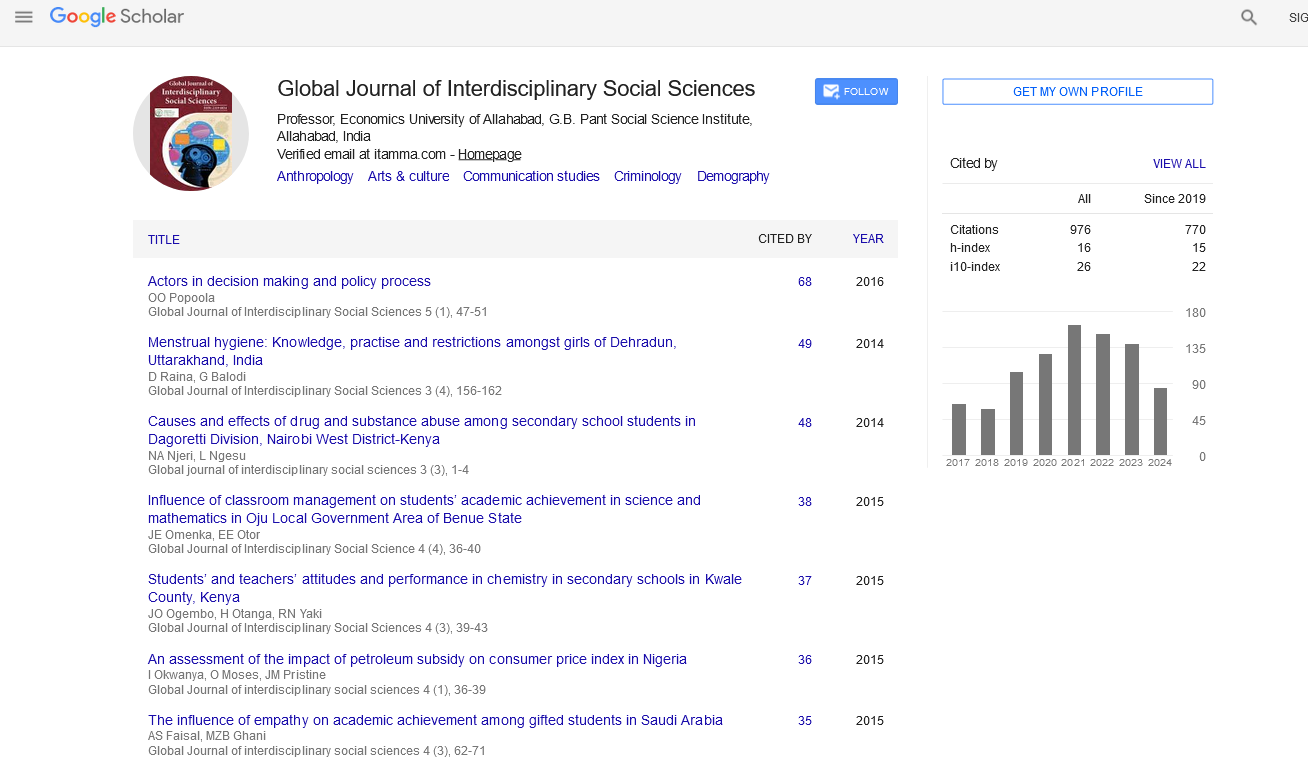Indexed In
- JournalTOCs
- Google Scholar
Useful Links
Share This Page
Journal Flyer

Open Access Journals
- Agri and Aquaculture
- Biochemistry
- Bioinformatics & Systems Biology
- Business & Management
- Chemistry
- Clinical Sciences
- Engineering
- Food & Nutrition
- General Science
- Genetics & Molecular Biology
- Immunology & Microbiology
- Medical Sciences
- Neuroscience & Psychology
- Nursing & Health Care
- Pharmaceutical Sciences
Abstract
Labour Law As a Grey Engine for Labour Quality and Competitiveness in Organizations Today
Goren Paula
Employee law is particularly a controversial issue as to whether or not an individual is an employee covered under the employment law or not since once someone is deemed to be a “worker,” that individual has legal protection, while, on the other hand, if a decision is rendered that the individual does not qualify as an “employee,” then he/she has no rights.(Barnett, 2002).To date the courts have resolved many disputes regarding various types of workers; e.g. directors who perform the same work assigned to employees, drivers who use their own trucks to transport goods a customer has consigned through a transport agency, independent contractors such as carpenters, entertainers, canvassers, workers who perform a highly specialized job like a systems engineer, teleworkers, since the term employee is a grey area of labour law, as its difficult to make a distinction between the concept of who is and who is not an “employee.” To date, the courts have ruled on a case-by-case basis, and consequently judgments depend on the merits of individual cases. (Barnett, 2002).However, judges tend to rely on certain characteristics when determining whether someone qualifies as an “employee.”While the factors that are taken into account have become clear, it is by no means certain scholars who have analyzed case laws note that according to prevailing academic opinion, the main characteristic of an employee covered under the law is the existence of a subordinate relationship with an employer. The concept of who is an employee in labour law is grey and was created to protect the “subordinate” employee. Therefore, in labor protective regulations, the protection for independent employee does not exist. But even this is ambiguous. Obviously, normal employees blue-collar or white-collar who perform their service in a factory or office are protected as a “employee” under labor legislation. But working styles have become greatly diversified, and accordingly so has the accompanying level of subordination. For instance, employees in a sales section are usually engaged in activity outside the office to deal with customers, rendering their work less susceptible to supervision. Moreover, employees in research departments section have usually wide discretion to undertake research, and their wages are closely related to their results and achievements. Therefore, it’s difficult to view these employees as being in a subordinate position vis-à-vis their employers. In short as working styles become more diversified, the more difficult it becomes to determine whether a relationship of subordination exists between the worker and the firm which utilizes his/her labor power. It may be true that the case-by-case approach adopted by the courts makes it possible to attain a more appropriate resolution of the litigation in question. But it is extremely difficult for both the parties to predict whether or not an individual who performs the service is deemed to be a worker under the labor laws. Hence, it may be the lack of legal stability and transparency that can cause problems. For example, an independent contractor may decide to suddenly take action against a firm with which it has a relationship, asserting that it is an employee and can claim overtime payments recognized under the law (Barnett, 2002).Of course, case law stipulates that the characteristics of a “worker” should be based upon real circumstances, regardless of the name the parties give to their contract. In this sense, from the theoretical viewpoint, a so-called “fake” worker is not allowed to exist, so that any individual can enjoy the status of worker as long as he/she meets the conditions mentioned above. But, as it is impossible in advance to determine the outcome of legal action, most people do not go this route because of the possibility they may lose (Groove, 2007).

